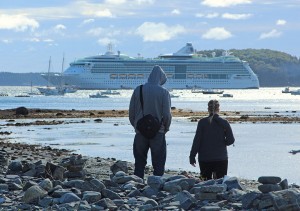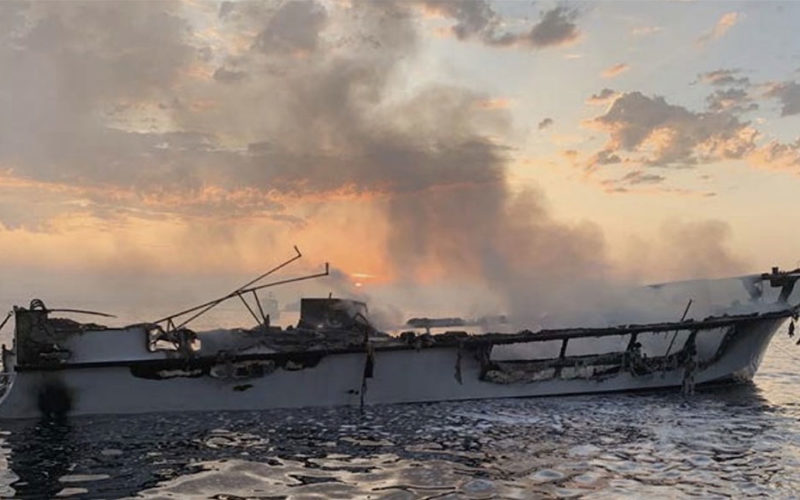
The suspension of cruise ship visits in the United States due to the COVID-19 pandemic has devastated the industry, but it has given popular ports a chance to experience something new: life without cruise ships.
Last year, the Centers for Disease Control and Prevention (CDC) imposed a no-sail order for cruise ships from March 14 to Oct. 29, which was extended on Oct. 30. Many U.S. communities were already working to limit the number and size of cruise ships, but the suspension gave residents an unforeseen way to measure the impact.
“This was an interesting year with COVID, because it’s the first time we haven’t had any cruise ships in many, many years,” said Gary Friedmann, a town councilor in Bar Harbor, Maine. “People got a chance to see what it was like and a lot of people really liked it.”
Cruise ships have visited the community of 5,559 people since the 1980s, but some residents feel that there are too many ships and passengers descending on their town. In 2019, 168 ships with 256,730 passengers stopped at Bar Harbor.
“There’s been a lot of talk in town: What is the right level of cruise ship visitation?” Friedmann said. “I do think we need to find the right balance. When there is a cruise ship or two in town every day, it gets pretty hard to feel like it’s our town anymore.”
Friedmann said many residents want a moratorium, but he does not support that idea. Bar Harbor already limits cruise ship passengers to 3,500 per day in July and August and 5,500 per day in May, June, September and October.
Finding a balance between cruise ship tourism and maintaining a community’s character — as well as weighing concerns about air and water pollution — are issues also facing Key West, Fla., and Monterey, Calif.
Residents of Key West, population 24,843, approved referendums in November that limit daily cruise ship visitors to 1,500; prohibit cruise ships with 1,300 passengers or more; and give priority to ships with the best health and environmental records. During the 2018-2019 season, 393 ships came to Key West with 913,323 passengers, according to the Florida Ports Council.
“I think (COVID-19) made people really wake up to the fact that our ecosystem that we have here is our greatest draw,” said Arlo Haskell, a member of the Key West Committee for Safer, Cleaner Ships. “Key West is a popular tourist destination because of the surrounding waters, because of the marine life.”
Statistics show that cruise passengers spend less than other visitors in Key West. “About 50 percent of all our visitors come off cruise ships, but less than 7 percent of all tourist spending comes from cruise ships,” Haskell said.
In Monterey, the concern about cruise ships is mainly environmental. In 2019, only 18 ships visited the Central Coast town, population 28,352. However, the ships traverse and anchor in the Monterey Bay National Marine Sanctuary, which includes 6,094 square miles of ocean and 276 miles of coastline.
The surfing organization Santa Cruz Waves began raising concerns about cruise ships in 2017. The group sponsored protests where as many as 100 surfers and kayakers paddled out to cruise ships to draw attention to their potential environmental impact.
“Because we are in the water all the time, we are aware of the water quality, and we are aware of the health and welfare of the marine animals who are with us in that water,” said Carrie Larssen, a surfer and Monterey resident. Regulations for the marine sanctuary prohibit the discharge of all material from cruise ships except clean water from engine cooling, generator cooling or anchor wash.
Laziza Lambert, spokeswoman for the Cruise Lines International Association, said the majority of cruise ships now have wastewater treatment systems with advanced filtration and disinfecting technologies that exceed requirements for sewage treatment plants on land. •
David A. Tyler

